Artificial intelligence tools are developing at a rapid pace, especially when it comes to generative AI engines that can produce something—a poem, a picture, a song, a video clip—based on short text prompts.
If you’re keen to explore the type of AI art that can now be rendered in seconds, we’ve picked out five solid tools to try. Tell these AI art generators what you’re looking for, and you’ll get a computer-rendered picture out the other end.
One key tip: Be as specific as you can be in your text prompts, and include as much detail as you can. That extends to the style of picture you want to create (from photorealistic to cartoonish) as well as what’s actually in the frame.
We’ll leave it to you to weigh the ethical considerations around these AI tools when it comes to deciding how much to make use of them. Remember that the companies behind these tools aren’t always fully transparent when it comes to the images they’ve been trained on—and that there are plenty of flesh and blood human photographers and artists out there looking to make a living.
Dall-E and ChatGPT
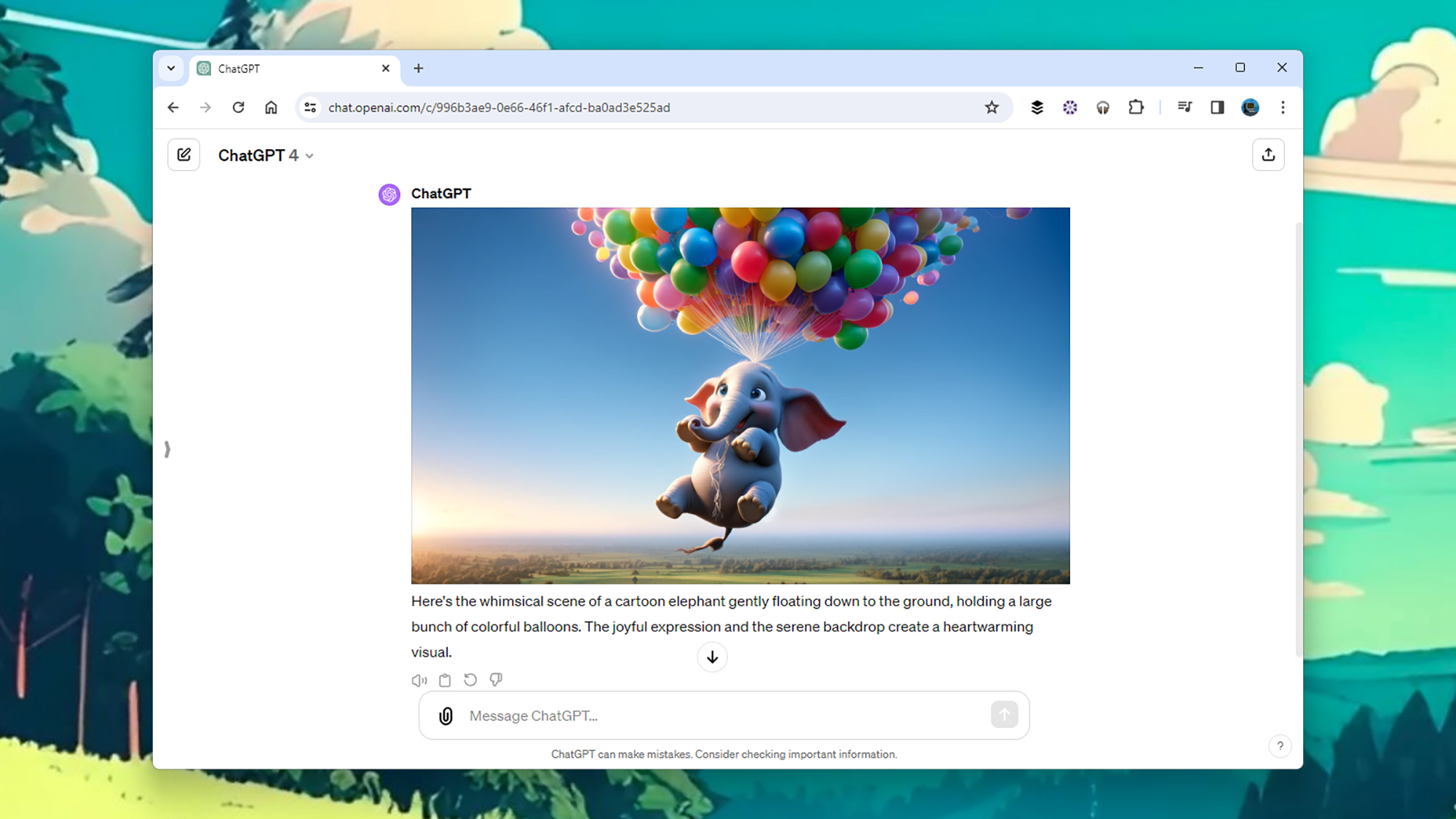 ChatGPT produced a high-quality elephant picture—but you only get one at a time. Screenshot: ChatGPT
ChatGPT produced a high-quality elephant picture—but you only get one at a time. Screenshot: ChatGPT
Dall-E and ChatGPT are both developed by OpenAI, and there’s some overlap in terms of what you can do with these two interfaces. You can try Dall-E 2 on the web, and that includes the option to add some AI magic to existing pictures, as well as generating them from scratch—115 credits (each image costs one credit) will set you back $15.
Image generation by the more advanced Dall-E 3 is available through ChatGPT on the web, as long as you’re paying $20 per month for ChatGPT Plus, and that lets you generate as many pictures as you like. Again, you can tweak existing images and create new ones. Just type in your prompt, and the image generator gets to work, returning a single image.
Dall-E and Microsoft Copilot
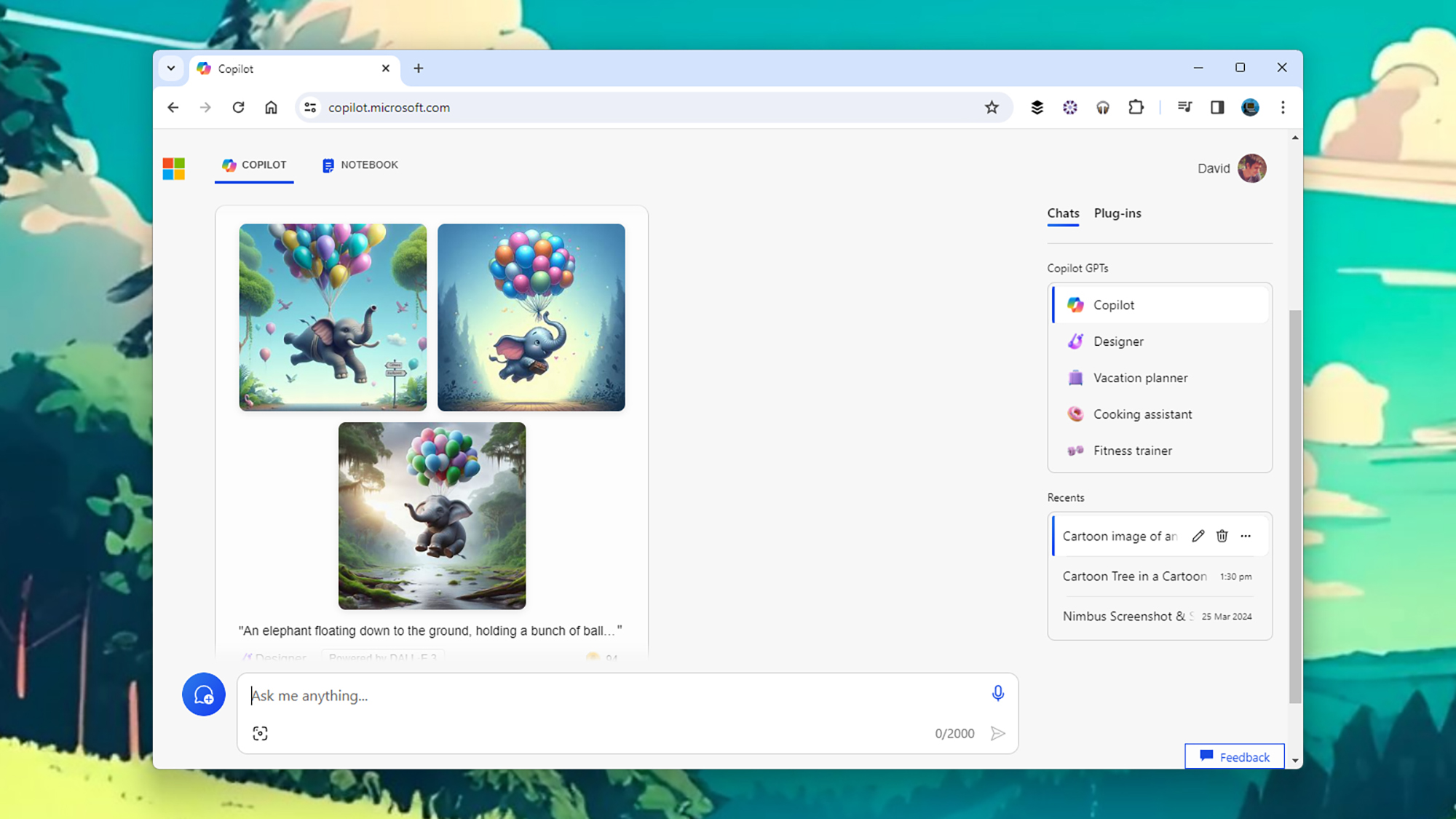 Copilot is a free option you can use on the web or in Windows. Screenshot: Microsoft
Copilot is a free option you can use on the web or in Windows. Screenshot: Microsoft
If you’re after a free AI image generator, then Microsoft Copilot is one of the best: You can get at Copilot on the web (with a Microsoft account), and it’s also now available in Windows 11 (search for “copilot” from the taskbar). The AI tech here is actually powered by Dall-E 3, as with ChatGPT, because of the partnership between Microsoft and OpenAI.
You get four images back for each prompt, so you can pick the one you like most, and we like the suggested follow-up prompts Copilot offers too. For $20 a month, you can get Copilot Pro, which speeds up the picture generation process and adds a bunch of other AI upgrades (like tighter integration with the Microsoft 365 suite of programs).
Midjourney
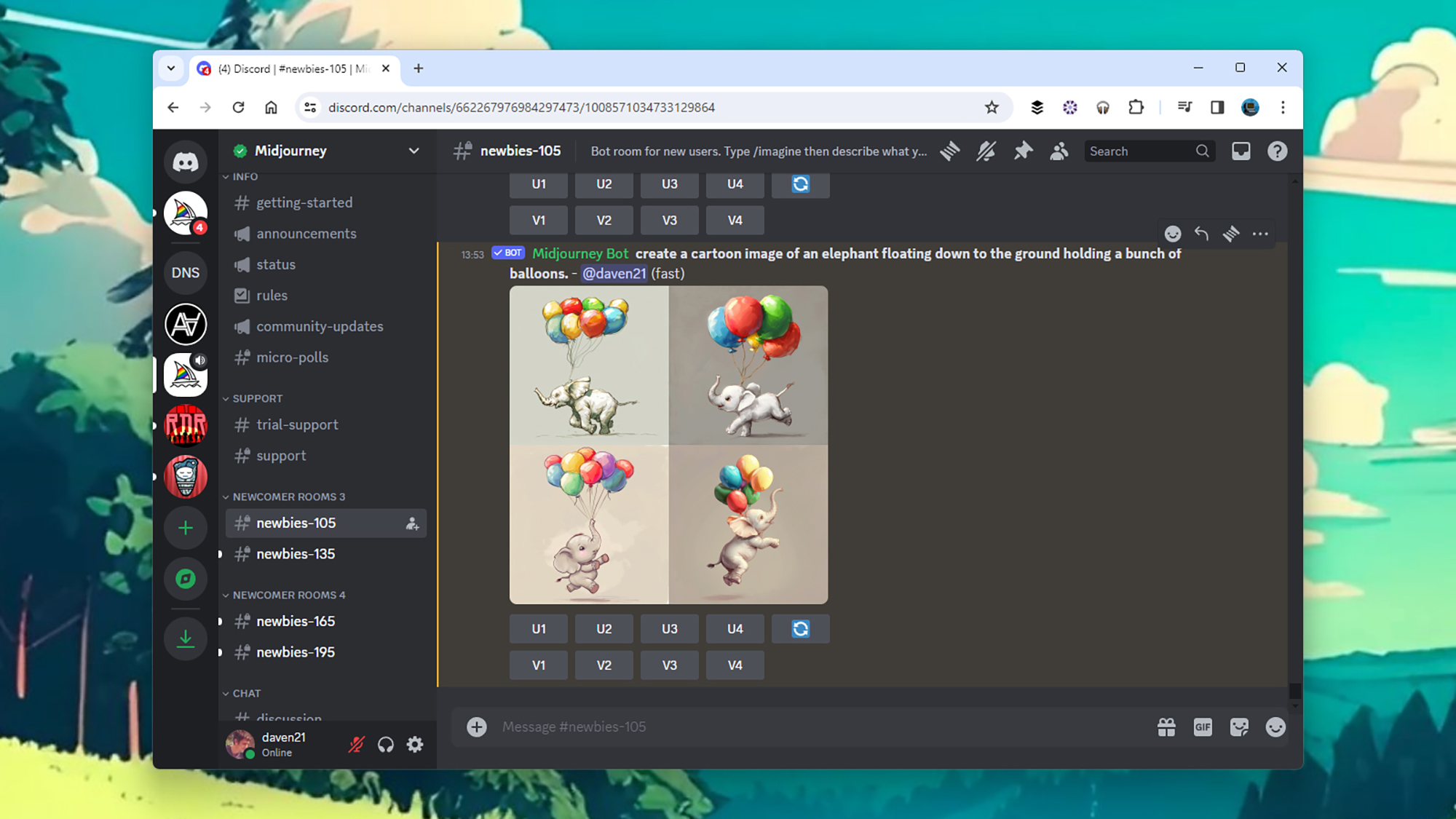 Midjourney asks you to send your image prompts through Discord. Screenshot: Midjourney
Midjourney asks you to send your image prompts through Discord. Screenshot: Midjourney
To play around with Midjourney, you have to join the Midjourney Discord—so you’ll need an account for the Discord chat app. You’ll see onboarding instructions when you sign up, but essentially you have to register, join one of the “newbie” channels for beginners, and sign up for one of the subscription plans for Midjourney—these start at $10 a month.
With all that done, you can begin creating in Discord on the web or in the mobile apps. Start your prompt with “/imagine” and then just type out what you’d like to see —you get four variations back, and you can then click the buttons underneath to generate more variations or larger images. Your pictures are saved to your online account too.
Adobe Firefly
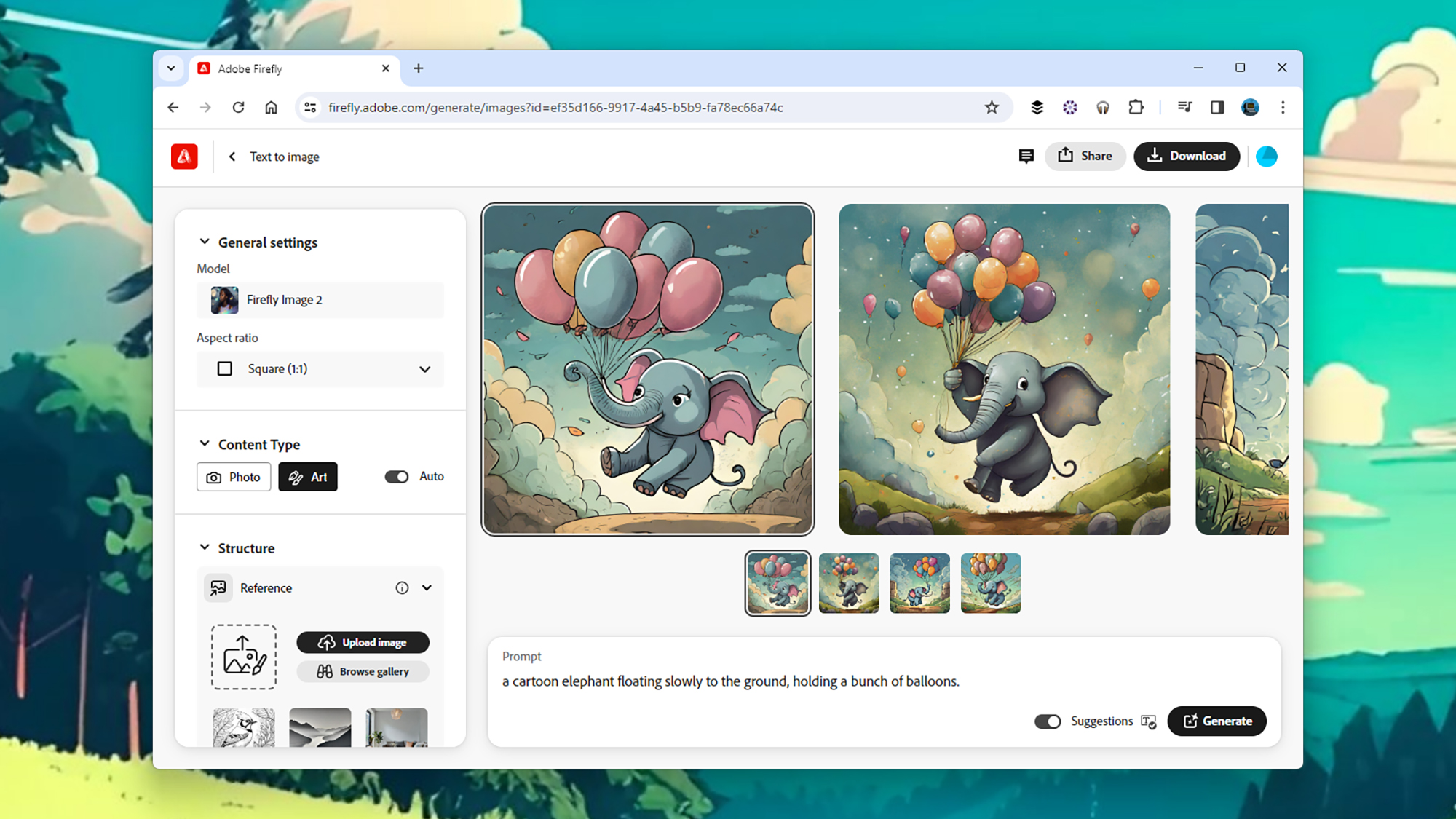 Firefly produced our favorite images from this particular exercise. Screenshot: Firefly
Firefly produced our favorite images from this particular exercise. Screenshot: Firefly
As you would expect from one of the biggest developers of digital art software, Adobe now has its own AI image generator, and it’s called Firefly. You’ll find it built into Adobe’s other tools, including Photoshop, but it’s also available as a standalone app on the web—you get 25 pictures per month for free, with paid plans (from $4.99 a month) upping this number.
The prompt box is in the center of the screen: Just type out your request and then click Generate. You can use your own images to help suggest a subject or style, and there are simple options for changing a picture’s look or aspect ratio. The community aspect of Firefly is impressive too—a vast gallery of AI artwork generated by other users.
Craiyon
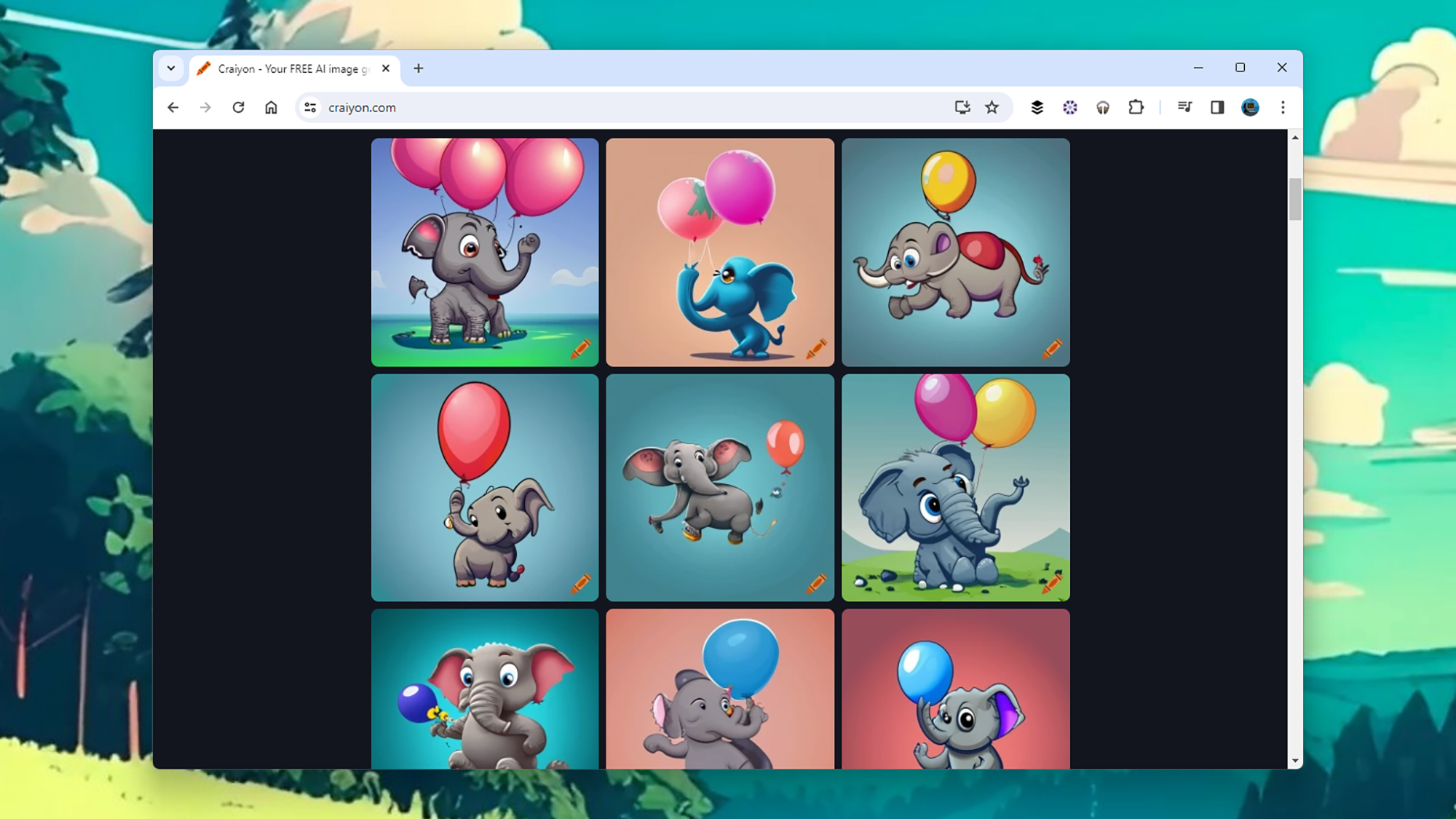 Craiyon’s pictures are less impressive, but it doesn’t cost anything. Screenshot: Craiyon
Craiyon’s pictures are less impressive, but it doesn’t cost anything. Screenshot: Craiyon
Craiyon isn’t as artistically talented as some of the other AI art generators we’ve mentioned here, but it has a free tier, and is really simple to use on the web (you don’t even need an account). If you need images faster and want to get rid of the watermarks and the ads, you can become a paying member—prices start at $6 per month for this.
Type your prompt into the box, choose the style of picture (if necessary) from the options underneath, then click Draw. A few recently created images are shown on the page, if you’re looking for some artistic inspiration (and these change to respond to what you’re typing too). You get nine image variations back, plus suggestions for follow-up prompts.

>>> Read full article>>>
Copyright for syndicated content belongs to the linked Source : Popular Science – https://www.popsci.com/diy/best-ai-art-generators/































